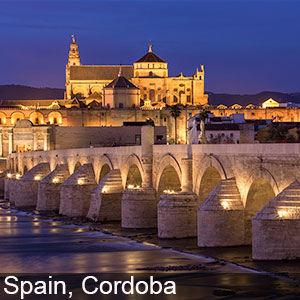
Jews in Moorish Spain: The Southern Route
Overview / Highlights
13 NIGHTS / 14 DAYS For all its political unrest, Muslim Iberia [Spain and Portugal] sustained its economic vitality well into the 12th century. The Jews shared in that affluence. Heavily concentrated in Granada, they earned their livelihoods as distributors of the region’s sugarcane and cotton; as exporters of marble, gold, silver, iron, and copper; as retail tradesmen, artisans, and physicians. Beyond Granada, Jewish enclaves were still to be found in Cordoba, the focus of the Jews’ original settlement, and in Lucena and Seville. During periods of civil instability, additional thousands also migrated northward to the Christian kingdoms of Asturias, Leon, Castile, Navarre, Coimbra. Yet even in the north, Spanish Jews by and large preserved their Arabic language and nomenclature, and remained extensively integrated into the Arab cultural terrain.
Tour Program Summery Outline
|
Click |



